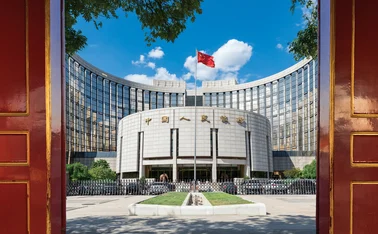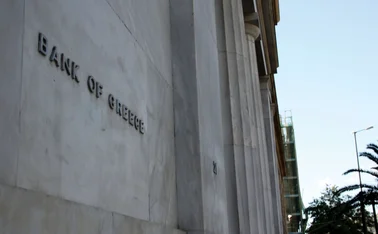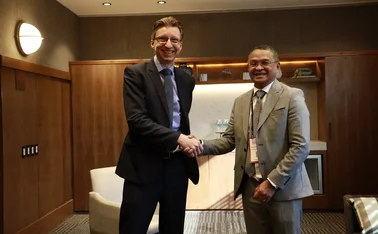
MAS speech - Credibility, Confidence, Dynamism
"Credibility, Confidence, Dynamism: MAS in the New Economic and Financial Landscape"
INTRODUCTION
1. It is a great pleasure for me to welcome you to MAS' 30th Anniversary Conference. We are honoured to have with us so many distinguished central bankers, financial supervisors, market participants and economists.
2. A new economic and financial landscape is emerging. Financial markets are becoming globalised; cross-border capital flows are larger and faster; financial institutions are consolidating and restructuring on a massive scale; and new and complex financial products are emerging, driven by technology and market pressures. Amidst these upheavals, MAS' goals as a central bank remain unchanged: low inflation for sustained economic growth, and a sound financial sector for markets to grow and thrive.
3. MAS is a unique organisation - it is the only institution in the world that combines responsibility for monetary policy with supervisory oversight of the entire financial sector - banking, insurance and securities. In addition, it has the task of promoting the development of Singapore as an international financial centre. I shall describe how MAS has met its responsibilities in these three areas over the past 30 years, some of the key events that have shaped our policies, and how we intend to move forward in the new economic and financial landscape.
BUILDING CONFIDENCE AND CREDIBILITY
Monetary Policy
4. MAS was born in turbulent times. It was 1971. The US dollar was under intense pressure, due to mounting inflation and balance of payments problems brought on by the Vietnam War and Great Society programmes. In August 1971, just months after MAS was formed, the US suspended convertibility of the US dollar into gold, plunging international currency markets into turmoil. In June 1973, the Bretton Woods system of fixed exchange rates finally collapsed, and the Singapore dollar was floated.
5. Having witnessed these tumultuous events and the instability they caused, the Singa-pore Govern-ment enshrined a strong and credible currency as one of the key pillars of macroeconomic policy, and charged MAS with the responsibility of ensuring it. Tight fiscal discipline, a healthy balance of payments, and a vibrant Singapore economy underpinned the steady strengthening of the Singapore dollar.
6. A second defining moment in the evolution of MAS' monetary policy came in 1981 when global inflation accelerated in the wake of the second oil shock. Dr Goh Keng Swee, who took over as Chairman of MAS, clarified low inflation as the key policy objective, and shifted the focus of monetary policy onto the exchange rate as the principal policy instrument. The high import content of our domestic expenditures meant that domestic inflation in Singapore was largely determined by changes in foreign prices and the exchange rate. Traditional monetary policy instruments such as money supply and interest rates were ineffective in controlling output and prices given the openness of our economy. As Dr Goh explained: "in 1981 there was a clearer recognition that the way to beat inflation is to have a strong Singapore dollar".
7. Internationally too, a hard currency was an important sign that the Singa-pore Govern-ment pursued a disciplined economic policy, and that Singa-pore was different from the many developing countries which chronically outspent their revenues and depreciated their currencies.
8. At the same time, a new international consensus on monetary policy had emerged with a greater awareness of the costs of inflation. The notion that mild inflation might be good for growth had been debunked by the experience of industrial countries in the 1970s. Instead, the industrialised countries with the lowest inflation such as Germany and Switzerland, had experienced the lowest unemployment rates. The simple Philips Curve, which implied a trade-off between inflation and unemployment, went out of fashion.
9. In line with our emergence as an international financial centre, we progressively dismantled exchange controls in the 1970s, until the last restriction was removed in 1978. The absence of exchange or capital controls made the conduct of an exchange rate centred monetary policy that much more difficult. Our small and open economy was especially vulnerable to sharp swings in the exchange rate or speculative attacks. We could not afford to assume that speculation in international financial markets was invariably self-stabilising, and that speculators who bet wrongly against the Singapore dollar would automatically be punished.
10. Therefore, MAS maintained an explicit policy of not encouraging the internationalisation of the Singapore dollar. It limited the extension of bank credit in Singa-pore dollars to non-residents except for economic activity, and buttressed this with some restrictions on interbank Singa-pore dollar derivatives, such as currency and interest rate swaps and options, which might have helped financial players to leverage or hedge their positions. This policy made it harder for would be speculators to short the Singapore dollar, and signalled unambiguously our disapproval of such speculation.
11. This framework served us well. That we encountered very few speculative attacks in practice perhaps showed that the policy was effective. The strength and stability of the Singapore dollar instilled confidence and kept inflation low. Price stability provided the foundation for sustained economic growth, which in turn provided the basis for continued strengthening of the Singapore dollar.
12. We benefited immensely from this virtuous cycle. Over the past two decades since 1981, the Singapore dollar has risen steadily by more than 70%, on a trade-weighted basis. Domestic inflation has been among the lowest in the world, averaging 2.0% per annum compared to 6.5% for the OECD countries. In real terms, GDP growth averaged 7.6% a year, while GDP per capita in 2000 was two and a half times the level in 1981.
Financial Supervision
13. MAS' second responsibility is oversight of the financial sector. MAS was an integrated supervisor long before this became internationally fashionable. When it was formed in 1971, MAS was responsible for both monetary policy and the supervision of banks. It took over supervision of the insurance industry in 1977, and the securities industry in 1984.
14. From the beginning, MAS' approach to supervising the financial sector was centred on a strict admission policy, high prudential requirements, and rigorous enforcement. We sought not only to maintain systemic stability, but also to protect individual institutions from failing, and the public and investors from losses. Lacking any track record, this approach was necessary to establish credibility with international financial institutions and their home regulators. When it emerged that Singapore had been spared the fallout from the collapse of BCCI because MAS had steadfastly refused BCCI entry despite persistent lobbying, MAS' reputation as a thorough and uncompromising regulator went up.
15. But despite our best efforts, we did have one major failure - the Pan-El crisis in 1985. Pan Electric Industries, or Pan-El, was a holding company with interests in hotels, property and marine operations. It went into receivership in November 1985, threatening the solvency of many stockbroking firms with whom it had forward contracts. MAS closed the stock exchange for 3 days while a lifeboat fund was organised. The four major local banks agreed to provide a standby line of credit, to aid the affected stockbrokers and restore market confidence.
16. Pan-El showed up certain weaknesses in our regulatory framework. Following Pan-El, MAS revamped the Securities Industry Act, raising standards and putting in place mechanisms for the proper regulation of the market. MAS considerably tightened its supervision of the stock exchange and the securities industry. To some extent this tighter approach permeated beyond the securities industry to other parts of the financial sector, and continued right up to 1997, when we shifted course.
Development of the Financial Industry
17. MAS' third responsibility was to promote the development of the financial industry. Singa-pore did not become a financial centre by accident or luck. The Government saw an opportunity to develop Singapore as a regional financial centre. We had a time zone advantage, bridging the gap between the close of markets in the US and the reopening of business the next day in Europe. We were also well-placed, with our good infrastructure and political stability, to serve as a point of intermediation for fund flows in an industrialising Asia.
18. We started by permitting banks to establish Asian Currency Units (ACUs) to accept non-Singapore dollar deposits. This paved the way for the creation of the Asian Dollar Market, the counterpart of the Eurodollar Market in London. We attracted international banks to set up ACUs here, and abolished withholding tax on interest income earned by non-resident depositors. We introduced a lower tax rate of 10% for offshore income1. From these modest beginnings, the Asian Dollar Market expanded, to reach total assets of US$500 billion today.
19. Another major initiative was the creation of SIMEX. In 1984, the Gold Exchange of Singapore expanded beyond trading of gold futures to include financial futures, and renamed itself the Singapore International Monetary Exchange (SIMEX). SIMEX was the first financial futures exchange in Asia. Well before exchange linkages became the norm, SIMEX co-pioneered the world's first mutual offset trading link with the Chicago Mercantile Exchange, facilitating round-the-clock trading. Renamed SGX-DT, the derivatives exchange today trades a broad range of interest rate, fixed income, equity and energy derivatives.
20. A later initiative was the programme launched in 1994 to develop the fund management industry in Singapore. Our fund management industry was small compared with other financial centres. The Central Provident Fund (CPF) system was absorbing the bulk of the population's long-term savings, and starving the private fund management industry of local funds. The Government liberalised the rules to allow CPF savings to be invested in approved unit trusts and fund management accounts. MAS and GIC went on to give modest mandates to external fund managers, although these could only be the seed money to grow the industry. At the end of 2000, the total assets managed by Singapore-based financial institutions was $276 billion, four times the $66 billion in 1994 when we embarked on the programme.
New Directions
21. The approaches that we took in monetary policy, financial supervision and development have served Singapore well. We maintained low inflation and a macroeconomic environment favourable to growth. Our capital markets have grown rapidly over the past few years, while our forex market is one of the largest in the world. With over 200 banks and merchant banks, 150 insurance companies and 160 investment advisors in Singapore, we have become a major financial centre.
22. But past achievements will not extrapolate into future successes, unless we update our policies to meet changing conditions. Policies that worked in the 1970s and 1980s needed rethinking by the 1990s. In 1997, we began a comprehensive review of MAS' policy framework and approach, which has led to fundamental changes. Our work is far from done, and we anticipate many challenges ahead.
CREDIBILITY AND DYNAMISM - MAS' APPROACH TO FUTURE CHALLENGES
Monetary Policy
23. In monetary policy, certain verities are not likely to change. We will continue to manage the exchange rate as our principal policy variable. The primary objective will still be to maintain price stability and the purchasing power of the Singapore dollar, over the medium term. We will continue to guard against destabilising speculation in the Singapore dollar.
24. However, the international environment has changed. We are witnessing larger capital flows and more volatile financial markets. G3 currencies have tended to undergo prolonged periods of misalignment, followed by sharp corrections. For a while after the Asian crisis, when currencies that were quasi-pegged to the US dollar collapsed in a disastrous contagion, a consensus was growing that the only sustainable exchange rate regimes for emerging markets are either a hard currency peg or a totally free float.
25. These corner solutions are not suitable for Singa-pore. A free floating exchange rate would mean relinquishing our most effective inflation-fighting instrument. On the other hand a fixed exchange rate, pegged say to the US dollar, would lock our economic fortunes to US monetary policy, with no assurance that it would be appropriate to the state of our economy. The intermediate option of a managed float remains the best approach for us.
26. In our experience, a managed float helps to buffer the adverse effects on the economy of short-term financial volatility, and to avoid sustained currency misalignments that can be damaging to our export sector. Managing the float requires us to lean against the wind at times, but provided our exchange rate policy is aligned with economic fundamentals, and our ability and determination to counter destabilising speculation is not in doubt, we need to intervene less than might be expected.
27. Until recently, MAS did not reveal its view of the exchange rate, what it had done, or what it intended to do. But going forward, MAS recognises the need to be more communicative and less opaque about its exchange rate policy. Hence we have been making half-yearly monetary policy statements announcing our prevailing policy stance. We have also published the movements of the trade-weighted Singapore dollar, hitherto a closely guarded secret. We envisage that if market participants and the public understand our policy stance better, there will be less uncertainty, and policy implementation will be more effective.
28. We have also reviewed and refined our policy on the internationalisation of the Singapore dollar. The balance of risks between not relaxing the non-internationalisation policy on the one hand, and lifting some specific restrictions in a progressive manner on the other, has shifted. With a more mature financial industry and a more internationalised economy, corporate players and financial institutions have a greater need for Singapore dollars and its derivatives for commercial transactions. At the same time, the economy and financial system have grown and become more resilient and our ability to manage the exchange rate has strengthened.
29. This is why MAS has liberalised the non-internationalisation policy, leaving only the most essential restrictions in place. This has enabled the bond market to take off, with foreign players raising Singa-pore dollar bonds, but swapping the proceeds into a foreign currency before taking them out of the country. We will continue to fine-tune the non-internationalisation policy from time to time, but the policy is no longer a significant constraint on the development of our capital markets or financial sector.
Financial Supervision
30. MAS has also, since 1998, been reviewing and updating its approach to regulating and supervising the financial sector. First, we have instituted a fundamental shift in emphasis away from "one-size-fits-all" regulation of institutions to risk-focused supervision, and from merit-based regulation of products to a disclosure-based regime. Second, we have embarked on a programme to liberalise access to all parts of the financial industry to stimulate greater competition and dynamism. These reforms are aimed at providing a more conducive environment for innovation and enterprise while promoting high standards of risk management, so as to help make Singapore a premier financial centre in Asia.
31. But these changes are just the beginning. MAS must continue to review and update its regulatory and supervisory framework, to appropriately address the risks and exploit the opportunities presented by the changing financial landscape. Let me outline three major challenges, and their implications for our regulatory and supervisory framework.
Future Challenges
32. The first challenge is that institutions will be larger and more complex. Singa-pore banks are merging, in search of greater scale and efficiency. They are following a worldwide trend. Bigger banks are better-placed to attract high-calibre talent, invest in cutting-edge technology, and diversify their risks. But they will also require tighter management and closer supervision, and the systemic consequences of difficulties in a large bank are more severe.
33. Secondly, the soundness of Singapore's financial system will increasingly depend on factors outside MAS' control. As our institutions expand their presence in the region, their financial strength will be tested by their exposure to regional markets. At the same time, we are opening our markets further to foreign players. This will also increase the risk of contagion as the soundness of foreign institutions is dependent on their home market and global operations.
34. Thirdly, we have to cope with new business models and financial products that are emerging faster than ever. Technology and competition are transforming the way in which financial services are produced and distributed, and driving the convergence of financial products and service providers. The traditional divides between banks, securities firms, and insurers are blurring. Securities firms are offering deposit-like products; banks are selling insurance under the rubric of "bancassurance"; and insurance companies are offering investment-linked products as substitutes for unit trusts. As Mr Andrew Crockett, General Manager of the BIS, said recently, the challenge for regulators will be to "create rules of the game that are robust to fad, fashions and arbitrage"2.
How should MAS respond?
35. How should MAS respond to these challenges? Our objective remains to promote a sound and progressive financial sector. Our approach to rule-setting must adapt to new developments, be sensitive to the effects of regulation on industry, and be focussed in identifying and addressing risks. We have already broadened the limits within which institutions have free play. We must now aim to develop a pro-enterprise supervisory framework that will encourage innovation and dynamism without compromising the safety and soundness of the financial system. Such a framework will comprise the following elements:
risk-focussed, consolidated supervision;
harmonised regulation;
sound corporate governance; and
effective market discipline.
Let me elaborate on these elements of the new framework.
Risk-focussed, Consolidated Supervision
36. We are adopting a risk-focussed, consolidated approach to the supervision of financial institutions. We will place more emphasis on understanding and evaluating an institution's risk management systems and internal controls. And we will apply this approach on a consolidated group-wide basis across all constituent institutions, local or overseas.
37. At the micro-level, MAS is improving the processes and techniques it uses to systematically evaluate a bank's operations and risk profile to determine the key areas that require attention. At the macro-level, MAS is enhancing its financial surveillance capabilities, to help identify emerging vulnerabilities, and assess how they will affect individual institutions or business activities, so that we can devote adequate supervisory resources to these areas.
Harmonised Regulation
38. MAS will also develop a more harmonised and integrated approach to regulation. Consistency in regulation across similar financial activities and products will help level the playing field, lower compliance costs, and reduce the scope for regulatory arbitrage. In this regard, MAS has begun to streamline the licensing regime and put in place a risk-based capital framework across the financial sector.
39. The new Securities and Futures Act will introduce a single, modular licensing regime for securities and futures intermediaries. The Financial Advisors Act will provide a single licensing regime and a more flexible and integrated regulatory framework, with consistent standards of business conduct for entities engaging in financial advisory activities for all investment products. But this is not a one-off process. As the industries and products continue to evolve, our laws and regulations will have to evolve with them.
40. We are making progress in applying the concept of risk-based capital. In banking, where risk-based capital standards already exist, MAS is working with the local banks to implement the proposed New Basel Capital Accord. In insurance, securities and futures trading, we are revising the existing disparate capital frameworks, to replace them with a consistent risk-based approach based on common principles and objectives.
Effective Corporate Governance
41. Over time, we should rely more on corporate governance and market discipline to complement prudential regulation and supervision. Good corporate governance is critical to fostering a strong risk management culture and effective internal controls. Going forward, MAS will further raise corporate governance standards, particularly with regards to enhancing the independence of boards and institutionalising professional management. But this must be phased in judiciously. We cannot impose these standards in a vacuum without regard to the institutional and cultural realities in our corporate sector.
Effective Market Discipline
42. Market discipline imposes external incentives on financial institutions to conduct their business in a sound and efficient manner. For market discipline to work, there must be timely and accurate disclosure of relevant information. Investors must be sophisticated enough to make good use of disclosed information, and make considered investment decisions appropriate to their needs and risk appetites. MAS will progressively raise disclosure standards in the financial sector to meet international best practice.
Development of the Financial Industry
43. MAS continues to be charged with the development of Singapore's financial sector. In 1998, we established a new department to focus our efforts on actively promoting the industry, identifying areas of opportunity, and profiling Singapore as an international financial centre.
44. The task ahead is daunting. External conditions are presently not favourable. The global economy is slowing down. Southeast Asia is taking longer than we had hoped to implement structural reforms that are essential for sustained growth. Investors are waiting to see how events unfold. There are fewer opportunities for institutions to service our immediate region, whether in offshore lending, mergers and acquisitions, or treasury operations.
45. We can and must look beyond immediate problems, and press on to upgrade our infrastructure and capabilities, so that institutions and investors will have stronger reasons to site activities in Singapore and use our financial markets. Then as Southeast Asia recovers, which in time it will, we will be ready to play our part in its pick up.
46. We have come a long way since 1968 when we started promoting the Asian Dollar Market. As we evolve into a full-service financial centre, it will become more difficult to identify individual projects or areas to pursue. Our approach is therefore to establish a conducive overall environment, within which market forces can operate and private sector innovation can thrive. We have to:
develop efficient, comprehensive and world-class infrastructure;
put in place a sound but pro-enterprise regulatory framework; and
attract, nurture and retain top talent, both local and foreign.
47. Such a competitive and pro-enterprise environment will bring out the areas in which we have a competitive advantage. We cannot predict in advance which activities will take off. But when some activities succeed we can promote and encourage their development, always pushing in the direction of market forces, and not against them.
CONCLUSION
48. MAS has built a reputation for credibility, prudence and competence over the last 30 years. But major challenges lie ahead. We have to manage exchange rate policy in an increasingly volatile market, build a sound and responsive regulatory environment that allows the financial industry to thrive, and promote Singapore as a financial centre even in the midst of adverse external conditions.
49. It is always easy to shelter from change, to reject anything new and to adopt a risk adverse approach. But if the sole objective of a captain is to protect his ship, then his vessel would never leave port. Over the last few years, we have altered our course - opening up to, rather than sheltering from, the winds of change.
50. To navigate in this dynamic environment, MAS will have to continue to strengthen its own capabilities. The pace of change is intense, and the demands on MAS' resources, expertise and judgement will only grow. We must broaden our contacts and consultation with market participants and fellow central bankers and regulators. This is the way to keep abreast of the latest developments in the financial industry, and evolving best practices in central banking and financial supervision.
51. We must groom a corps of competent and committed economists, supervisors, and investment managers within MAS. But this will not be sufficient. We also have to reinforce our team with talent from industry and abroad. We already have foreign and mid-career professionals among our ranks, but we must attract more such persons. Only by building a truly world-class MAS team, will we succeed in our mission - to promote macro-economic stability, and a sound and progressive financial centre.
Only users who have a paid subscription or are part of a corporate subscription are able to print or copy content.
To access these options, along with all other subscription benefits, please contact info@centralbanking.com or view our subscription options here: http://subscriptions.centralbanking.com/subscribe
You are currently unable to print this content. Please contact info@centralbanking.com to find out more.
You are currently unable to copy this content. Please contact info@centralbanking.com to find out more.
Copyright Infopro Digital Limited. All rights reserved.
As outlined in our terms and conditions, https://www.infopro-digital.com/terms-and-conditions/subscriptions/ (point 2.4), printing is limited to a single copy.
If you would like to purchase additional rights please email info@centralbanking.com
Copyright Infopro Digital Limited. All rights reserved.
You may share this content using our article tools. As outlined in our terms and conditions, https://www.infopro-digital.com/terms-and-conditions/subscriptions/ (clause 2.4), an Authorised User may only make one copy of the materials for their own personal use. You must also comply with the restrictions in clause 2.5.
If you would like to purchase additional rights please email info@centralbanking.com







